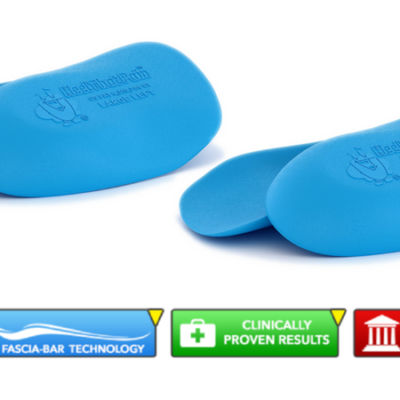Heel Spurs Causes
If the phrase “heel spurs” brings to mind a cowboy prodding his tired horse with sharp, silver stars on the heel of his boots, that image isn’t far off.
What, exactly, are heel spurs? What causes them? And how can you treat them if you start to notice an unwelcome stabbing sensation with each step?
What Are Heel Spurs?
Heel spurs are calcium deposits that form on the heel bone. While some heel spurs may grow undetected for months or even years, other heel spurs cause heel pain, inflammation, and difficulty walking when they begin to dig into the fatty heel pad.
Heel spurs are closely connected with plantar fasciitis, since these calcium deposits commonly form where the plantar fascia (a stretchy ligament that connects the heel and ball of the foot) attaches to the bottom of the heel bone.
What Causes Heel Spurs?
Plantar fasciitis is one of the most common cause of heel spurs. In fact, about 70% of plantar fasciitis sufferers have heel spurs. Why? Researchers believe that these tiny calcium deposits are the body’s attempt to protect and fortify the plantar fascia when it’s damaged or strained by sending extra calcium to the injury site. Unfortunately, over time this extra calcium can build up as sharp, protruding bone spurs that dig into the fat pad of the heel.
All of the following risk factors can increase your odds of developing plantar fasciitis–and heel spurs:
- Overuse without proper rest
- Injury to the heel or arch of the foot
- Poorly fitting or worn footwear that strains the arch or hinders the gait
- Sudden weight gain that puts more strain on the arch of the foot
- High-impact exercise routines or sports that wear down the fascia (any activity that involves lots of running, jumping, or sudden movements)
- Jobs that require long periods of standing, or lifting heavy objects
Heel spurs are more common in women than men, in part because of ill-fitting, unsupportive footwear. Heel spurs are also more common as we age. People over 40 are especially likely to develop heel spurs.
Why Do Heel Spurs Cause Pain?
Heel spurs are one of the main culprits of morning pain, the hallmark of plantar fasciitis. During the night while the feet and legs aren’t working, the plantar fascia tightens up. The first few steps in the morning put pressure on this tight, painful tissue — and make any contact with heel spurs all the more excruciating.
While the heel spur itself has no feeling (it’s just a bony calcium deposit!) the tissues in contact with the heel spur certainly do. As a sharp, pointy heel spur digs into the fat pad of the heel, nerves in the foot, and other tissues, walking and standing can become increasingly difficult and painful. Bruising, pain, and inflammation can become very severe and even debilitating.
Keep in mind that about 38 percent of the population has a heel spur and doesn’t even know it! Whether or not your heel spurs cause pain depends on their size, shape, and placement on the heel.
How Can I Treat or Prevent Heel Spurs?
As with any injury, prevention is ideal. Avoid developing heel spurs in the first place by wearing supportive, properly fitting shoes that help your arch distribute weight and absorb impact properly. It’s also important to rest between exercise sessions or high-impact sports, break up long periods of standing, and take special care of your feet if you’ve recently gained weight or are pregnant.
If you’re already suffering from painful heel spurs, it’s important to support the arch while also taking the pressure off painful heel spurs. Wearing orthotic inserts with Fascia-Bar technology is one of the most effective ways to realign the arch to a proper height, while also removing the pressure from heel spurs.
Icing can also help improve the pain and inflammation of heel spurs. While you’re healing, you may need to take a break from high-impact sports or exercises that strain your arch, and be especially diligent about giving your feet periods of rest throughout the day. While surgery for heel spurs is a last resort because of the long recovery and expense, outcomes are typically favorable. If your heel spurs don’t improve with orthotics, rest, icing, and proper footwear, talk to your doctor about next steps.
Heel Spurs Knowledge Base:
Exercises & Stretches for Heel Spurs






